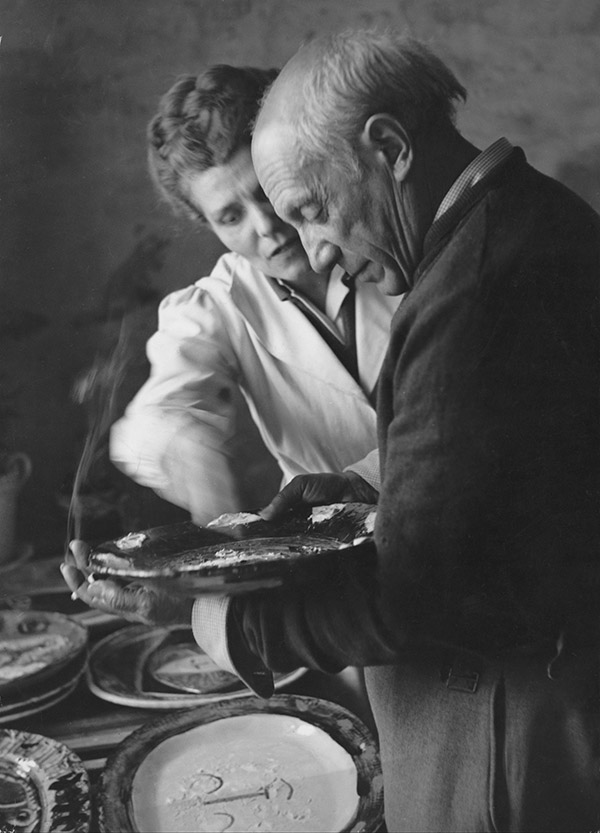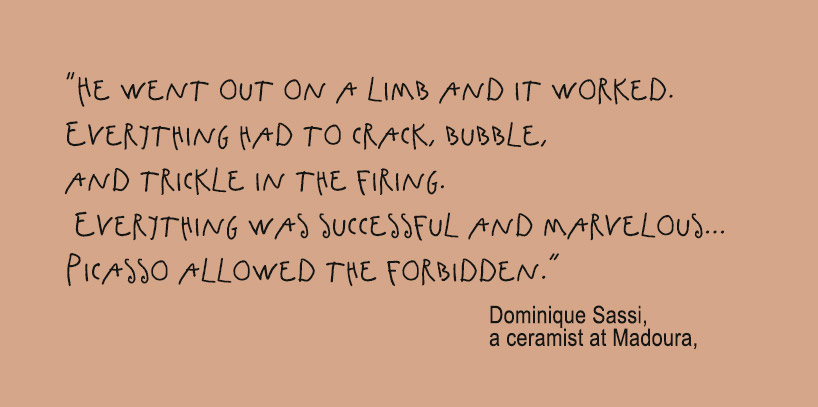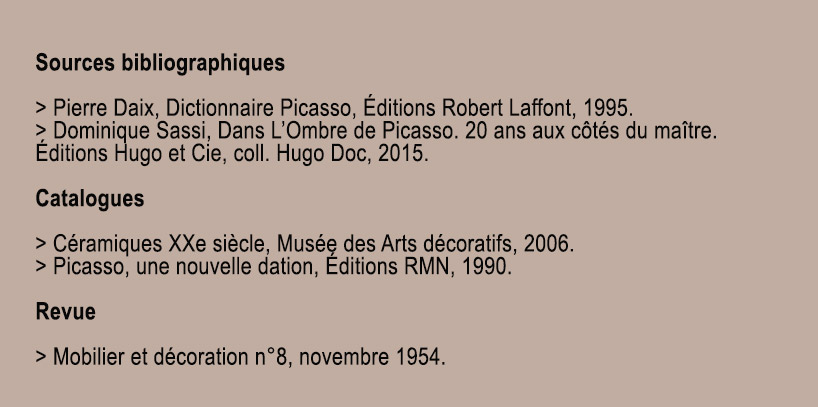Following Suzanne Ramié's Marvelous Footsteps
Suzanne Douly (1905-1974) studied decoration and ceramics at the Beaux-Arts school in Lyon from 1922 to 1926, and was granted the Triennial Award by the French Ministry of Industry. She began her career as a textile designer at Gilet et Tahon, in Lyon; met Georges Ramié (1901-1976), whom she married, and then moved with him to Vallauris in 1938. There she apprenticed to Jean-Baptiste Chiapello, a traditional potter. In 1939, using his studio as a base, she returned to Lyon, where she held a successful exhibition which encouraged her to continue along the path she had chosen. She pursued her work jointly with her husband and from that moment signed all her works Madoura, an acronym of Maison Douly et Ramié.
Although Suzanne Ramié began her career producing utilitarian ceramics like her peers, she quickly turned towards more imaginative forms, and ceramics, the support she had chosen for her creative quest, allowed her to produce pieces that were far removed from the aesthetics of her time. Pared down, stripped of any decoration, original, her work ran counter to everything that was being done in the traditional medium. She worked with materials and enamels. She sought inspiration in archaic ceramics, particularly Pre-Columbian, an area which she knew well and towards which she felt particularly drawn. Later on, in the 1970s, Suzanne Ramié's work evolved towards sculptural and geometric pieces. Madoura participated all the major regional events and exhibitions, particularly that held in Vallauris (Hall du Nérolium) from 1946 on.
Picasso "sniffed out" the atmosphere in this studio: his choice of the Madoura workshop for executing his ceramic work (close to 3,500 original pieces and 600 editions) was the result of his having met Suzanne Ramié, whom he immediately identified as exceptional. In the note on the nineteen ceramic pieces from the Dation Jacqueline Picasso, we read that "encountering the Madoura studio opened up the horizon of a new 'trade' for Picasso: the painter, sculptor, draftsman, and printmaker would also be a ceramist. But he would be so on his own terms, as a painter, sculptor, draftsman, and printmaker, using the materials that the potter made available to him [...] from the studio's production."
Suzanne Ramié taught Picasso the traditional techniques for firing and enameling clay. Picasso, who wanted to "do everything with everything," also seized the opportunity to appropriate whatever he came across in the studio, from scraps and discarded pieces to chipped bricks. Two different processes were used at the Madoura studio for producing Picasso's ceramic editions: the first involved a limited production run using a plaster mould; the second consisted of producing authentic replicas of an original piece made by the artist.
Picasso's presence in Vallauris in 1948 brought fame to the studio while also putting its regular production on hold. Dominique Sassi, a ceramist at Madoura who worked on Picasso's ceramic pieces for nearly twenty years, recalls: "He went out on a limb and it worked. Everything had to crack, bubble, and trickle in the firing. […] Everything was successful and marvelous […] Picasso allowed the forbidden."
However, Suzanne Ramié never abandoned her own creative pursuits. So as not to compete with the master, she only used monochrome enamels that varied in the course of different periods in her production: white, bright yellow, deep blue, and orange. Picasso and Suzanne Ramié held a dialogue through their pieces: Suzanne's monochrome vases reappeared as colored, "sexed" works executed by Picasso's hand. It is important to remember that it was through Suzanne that Picasso met her cousin Jacqueline, who would become his wife. Picasso frequented the studio until 1961, when he moved to Notre-Dame-De-Vie. His connection with Suzanne Ramié lasted until the end of his life.
The Poterie Madoura also welcomed a large number of other artists during the 1950s and 60s, such as Marc Chagall, Victor Brauner, Tsuguharu Foujita, and Henri Matisse.
Suzanne Ramié was named Chevalier of the French Legion of Honor in 1953.







 Summary
Summary